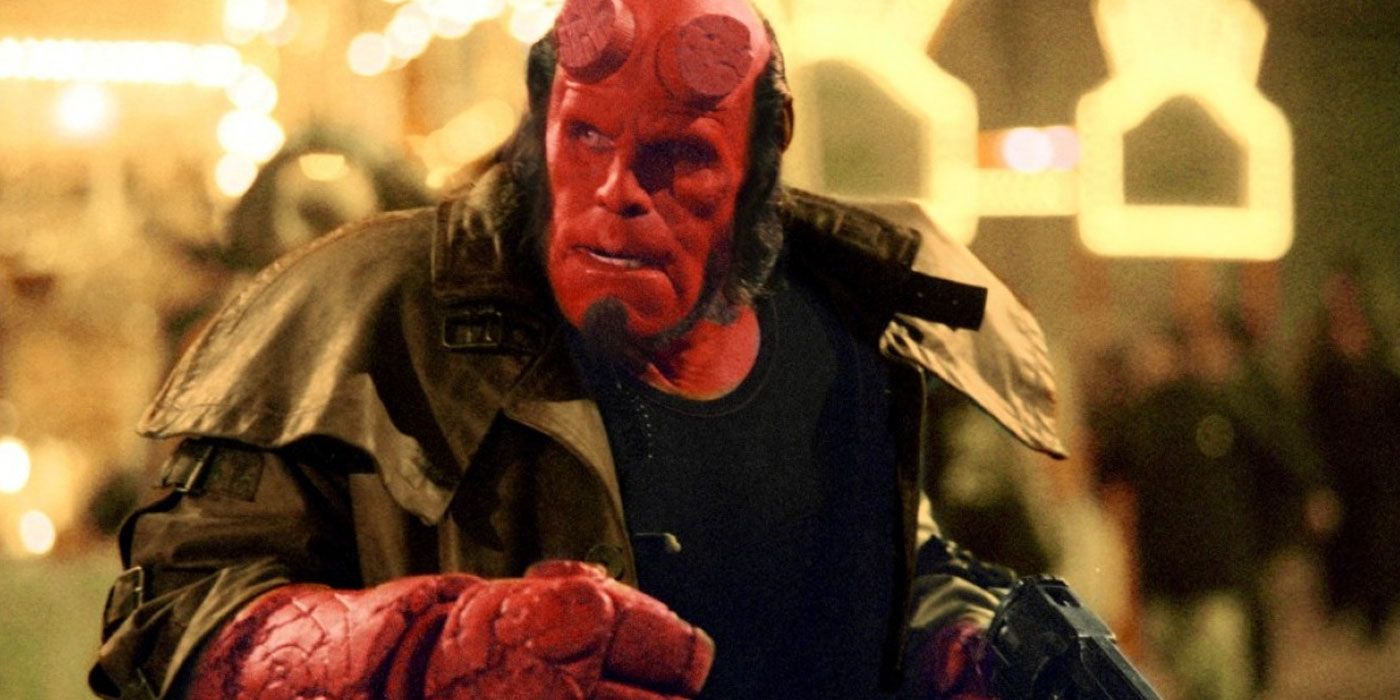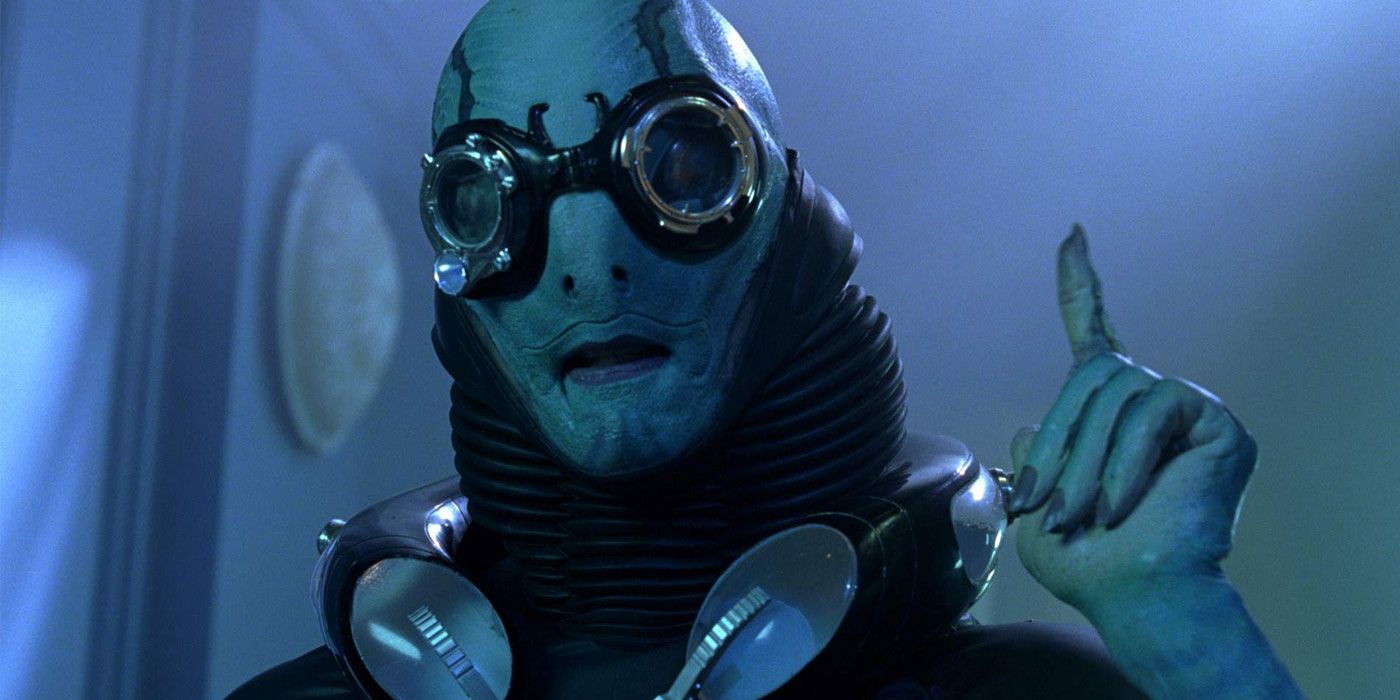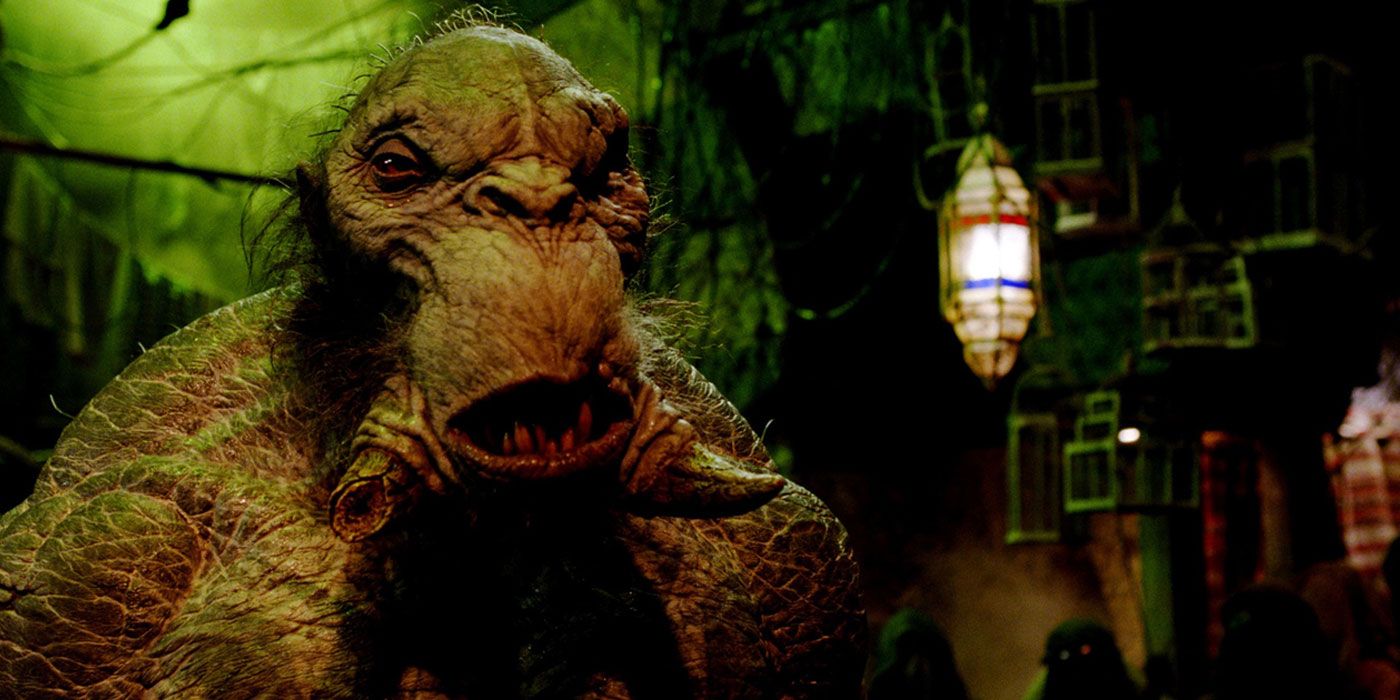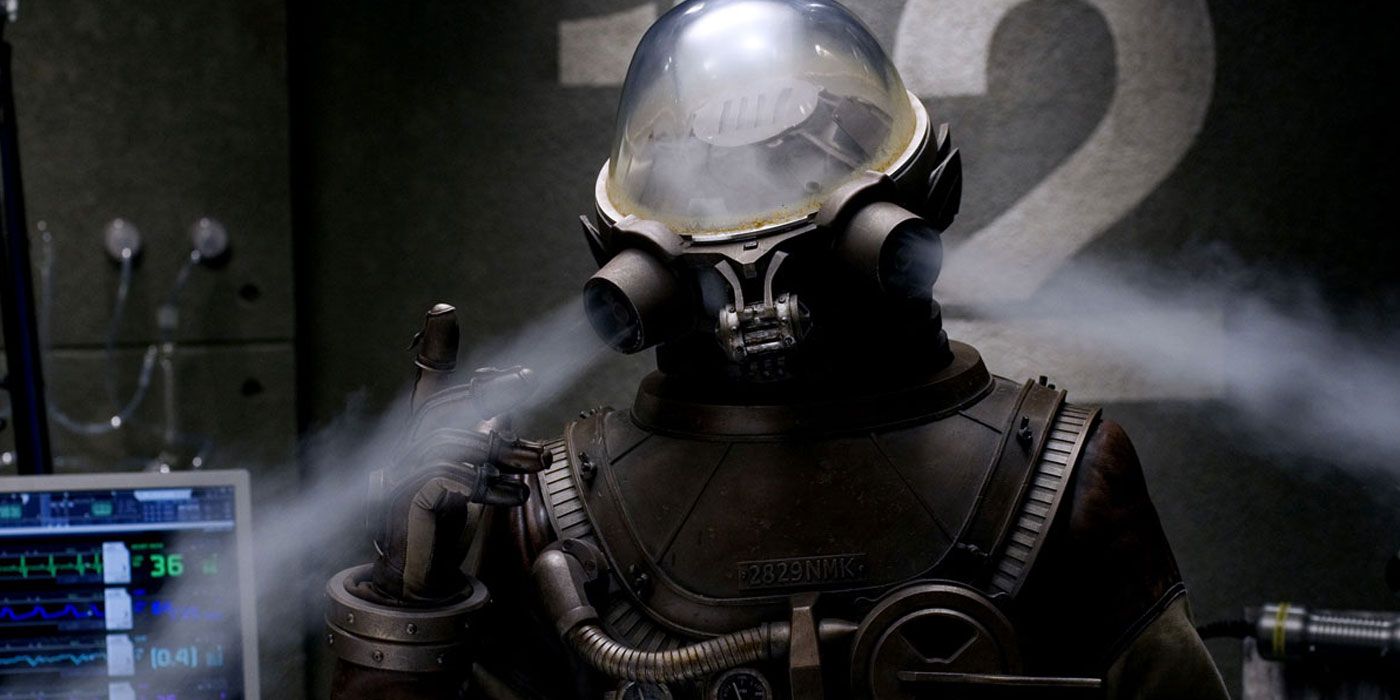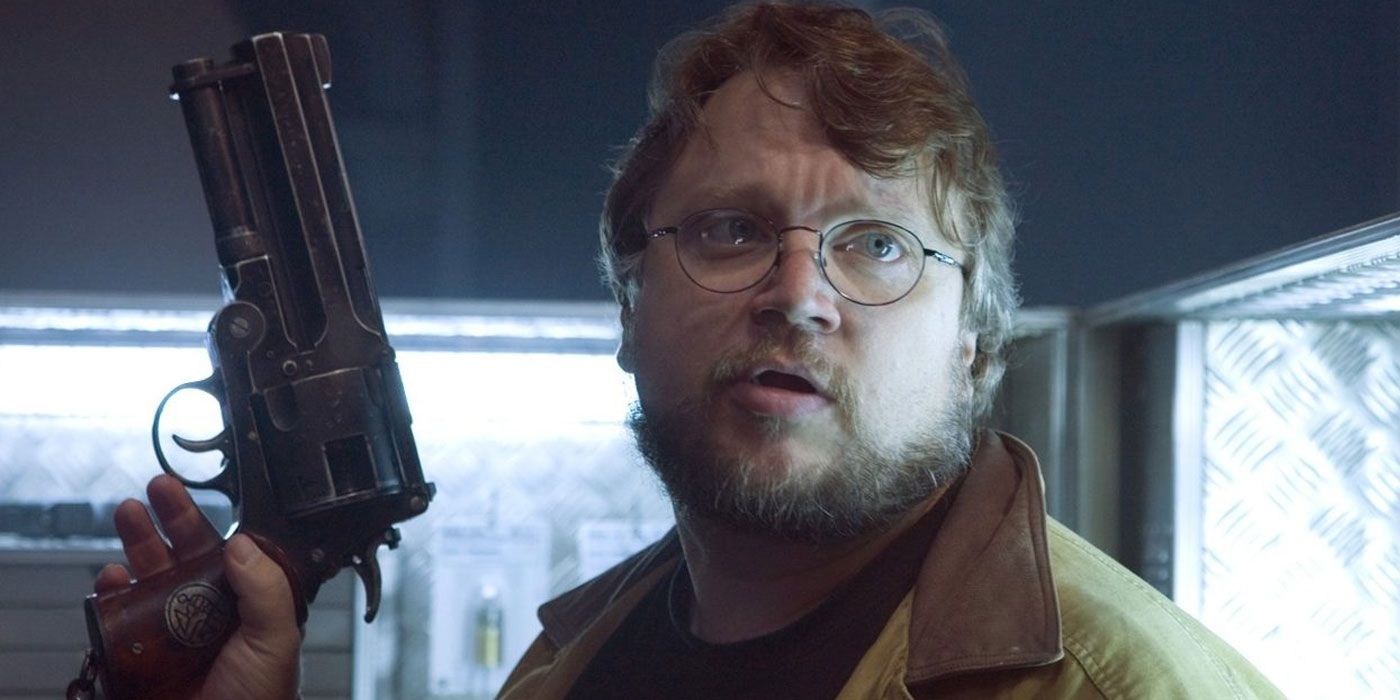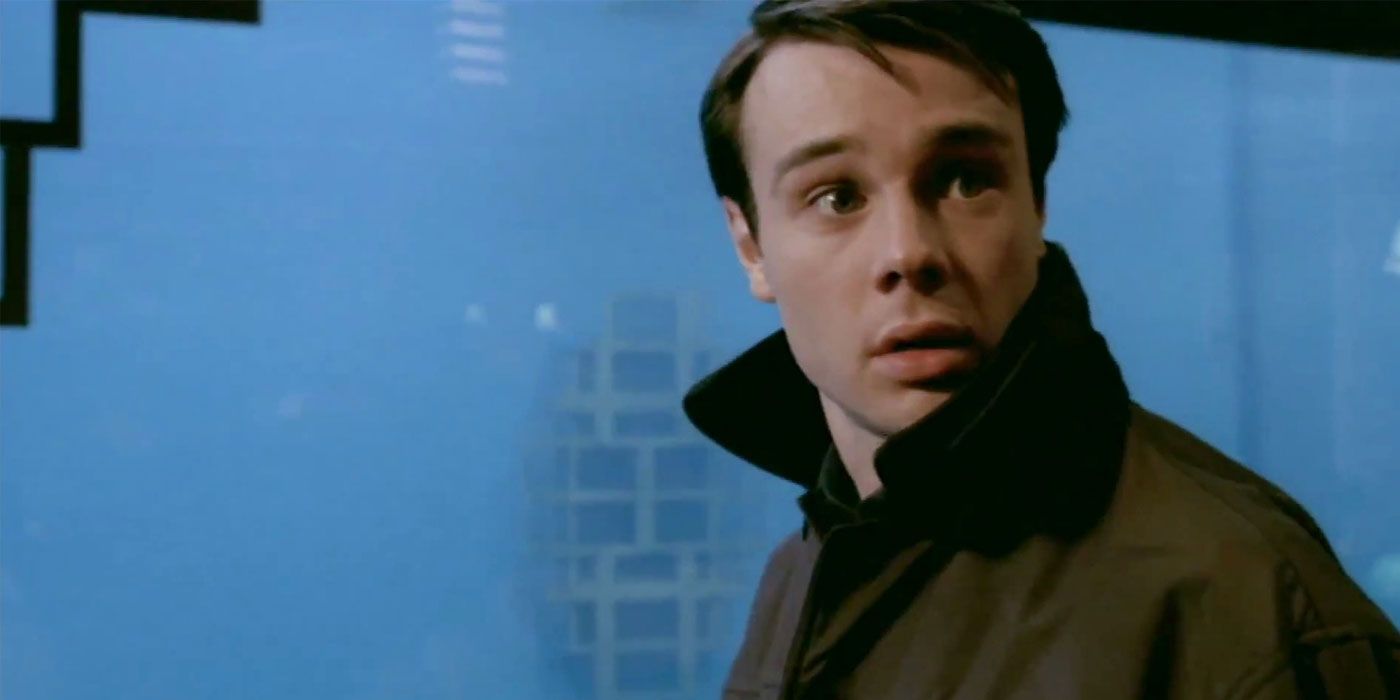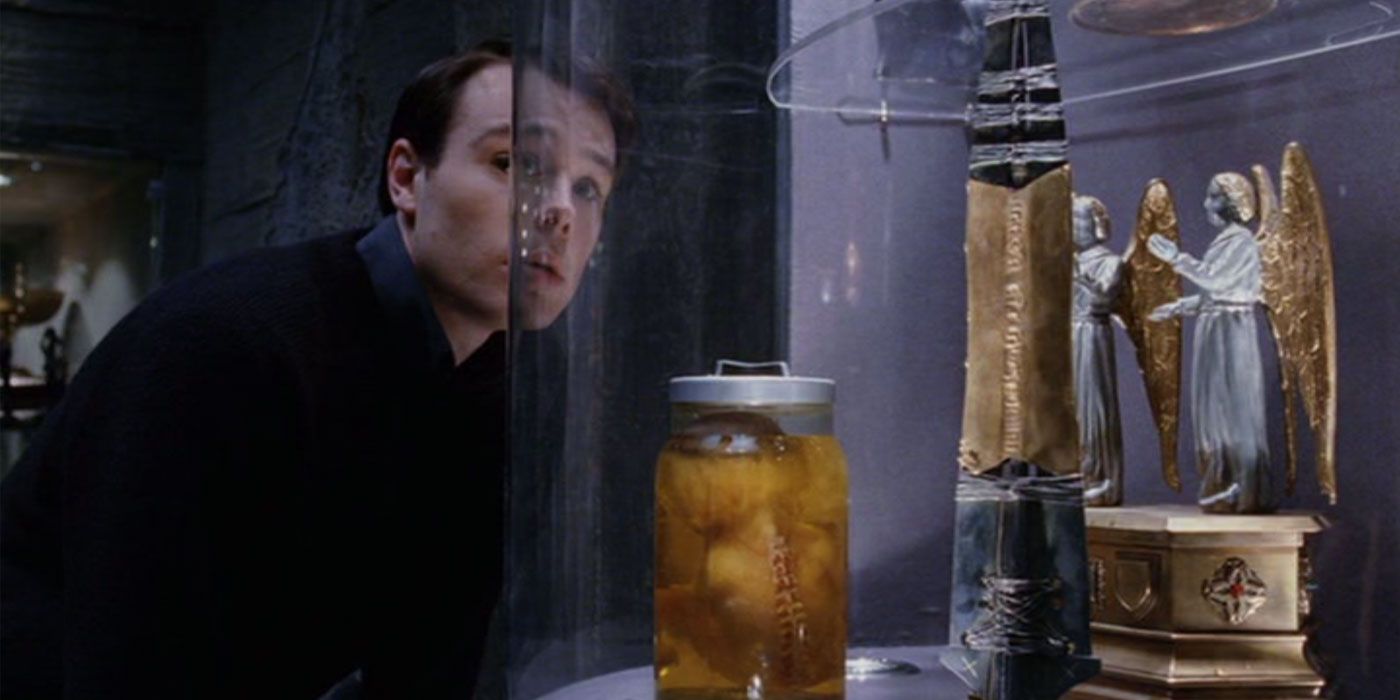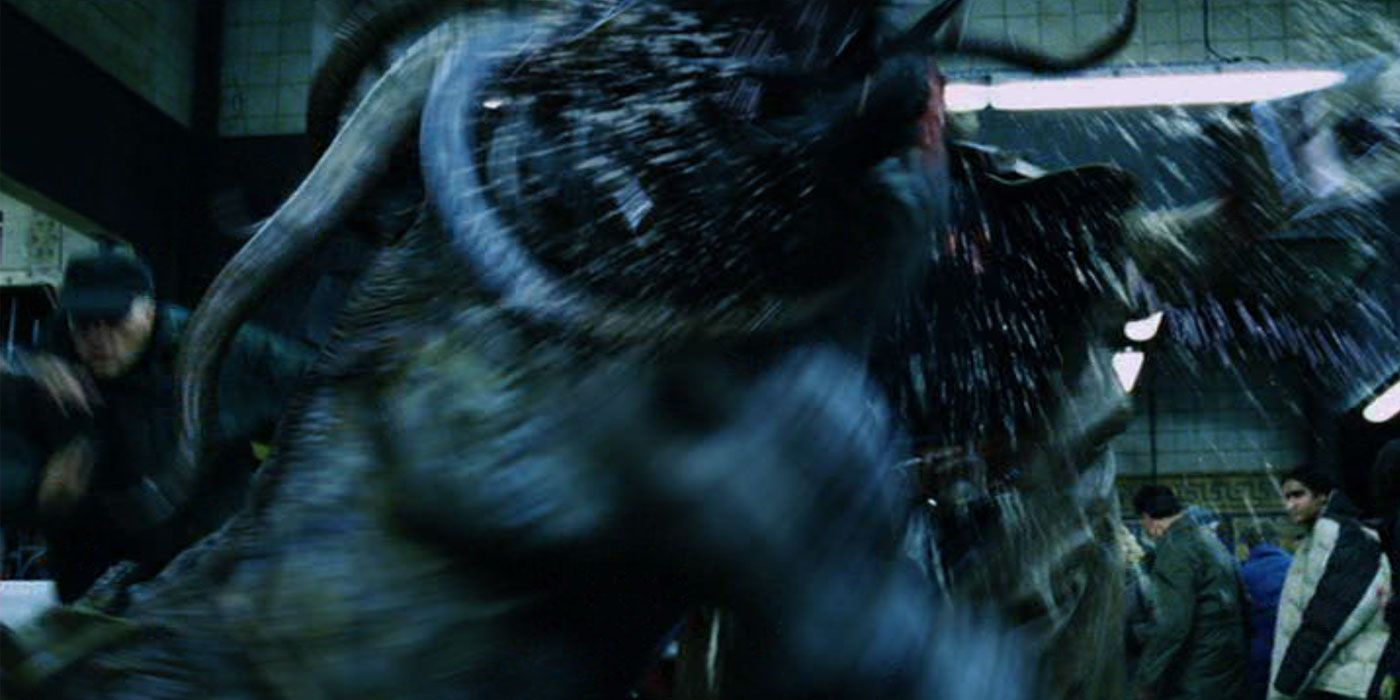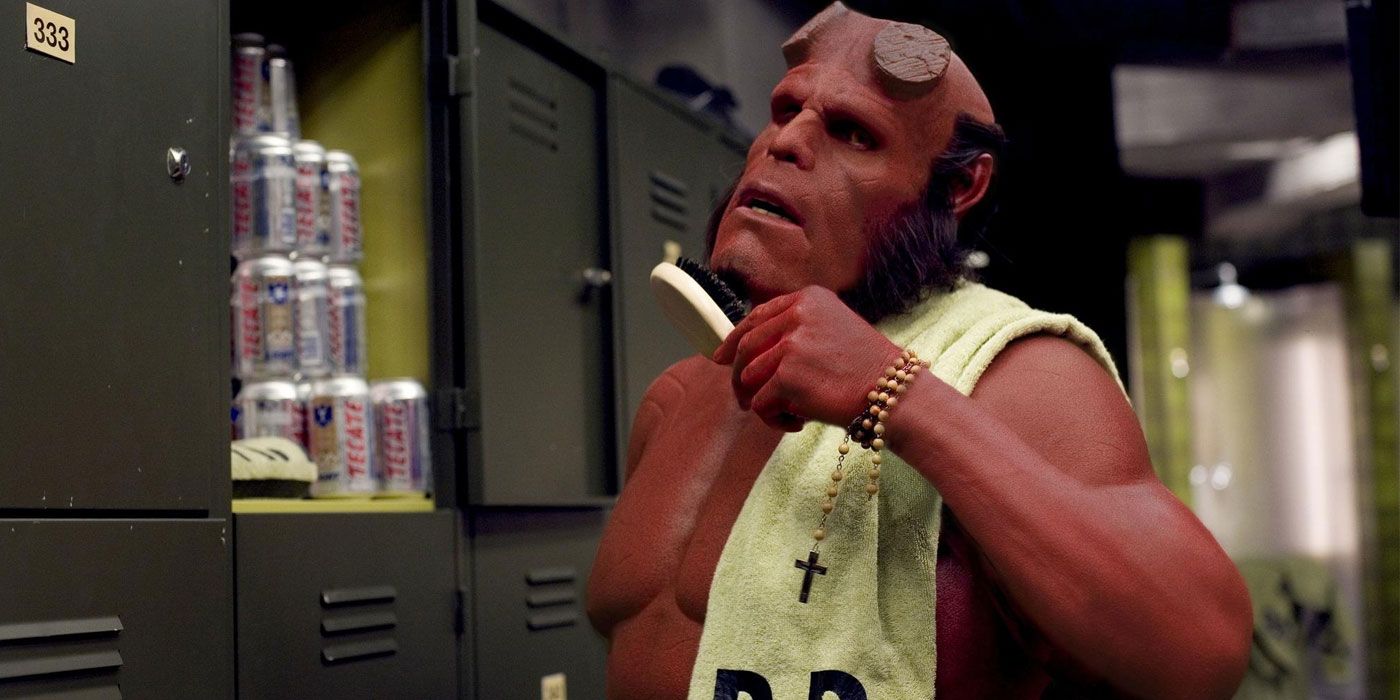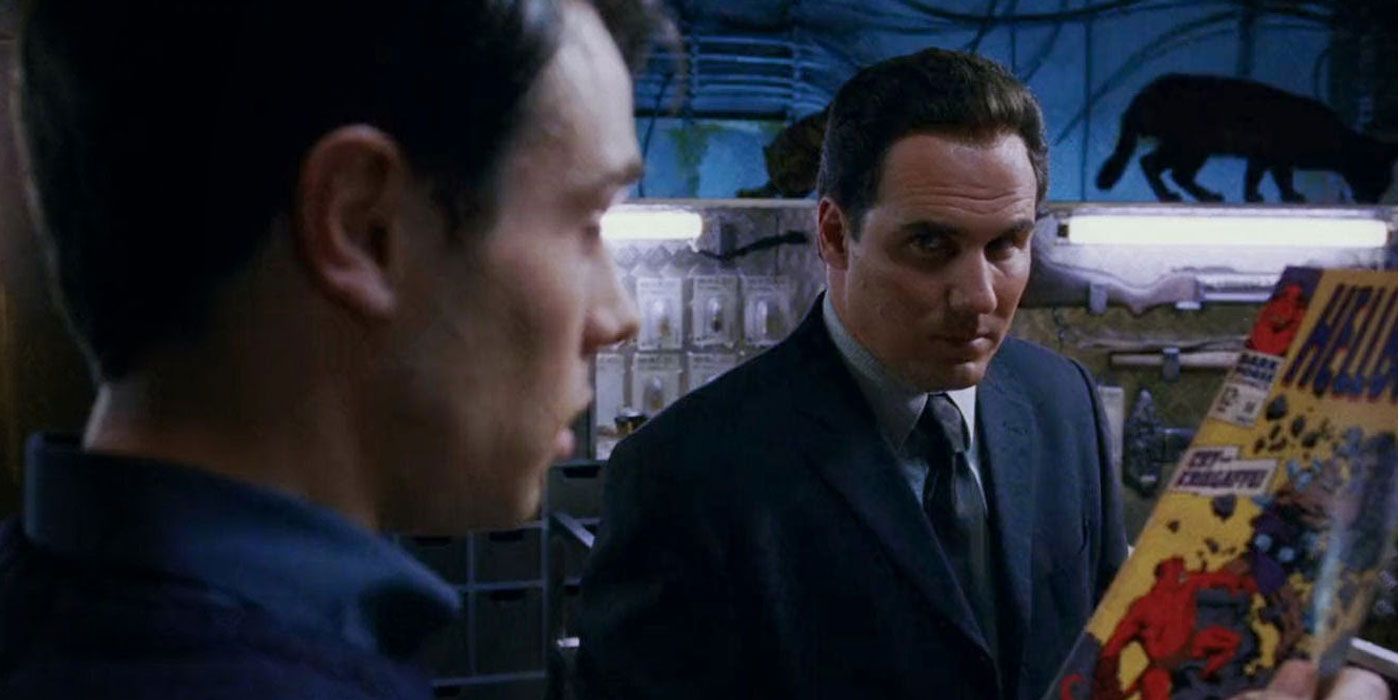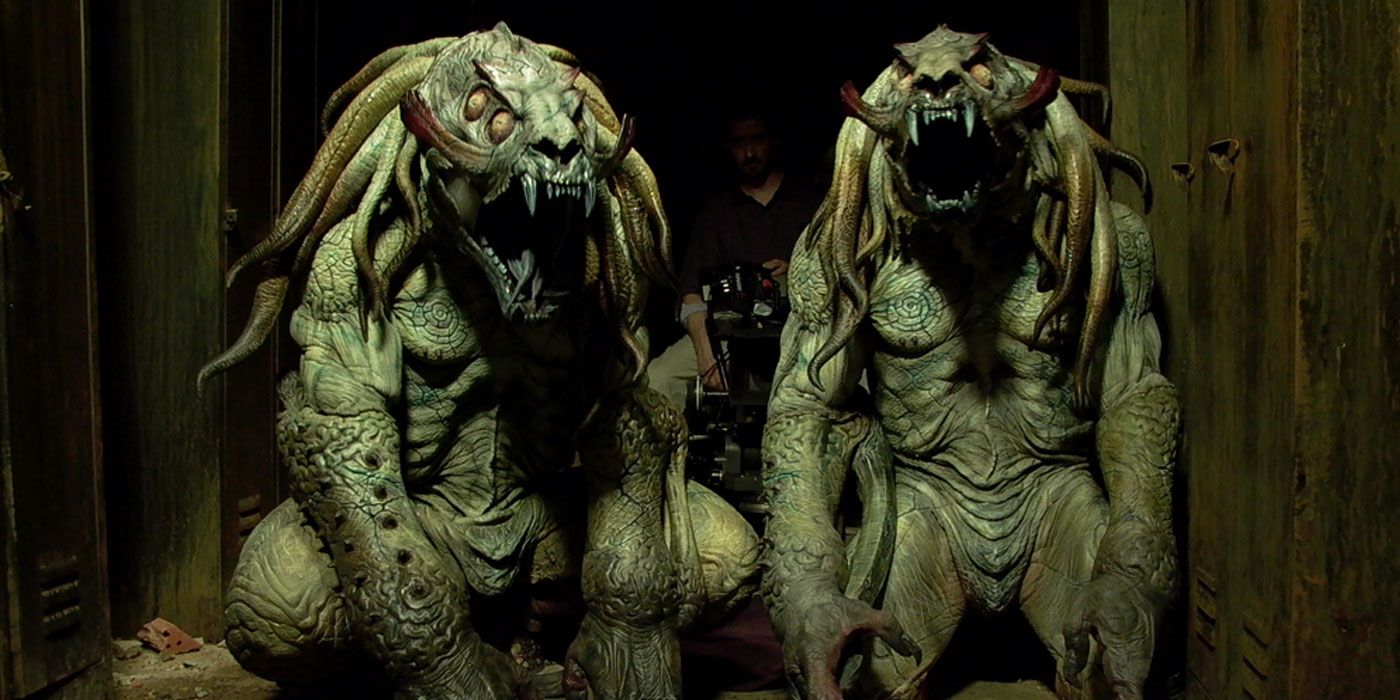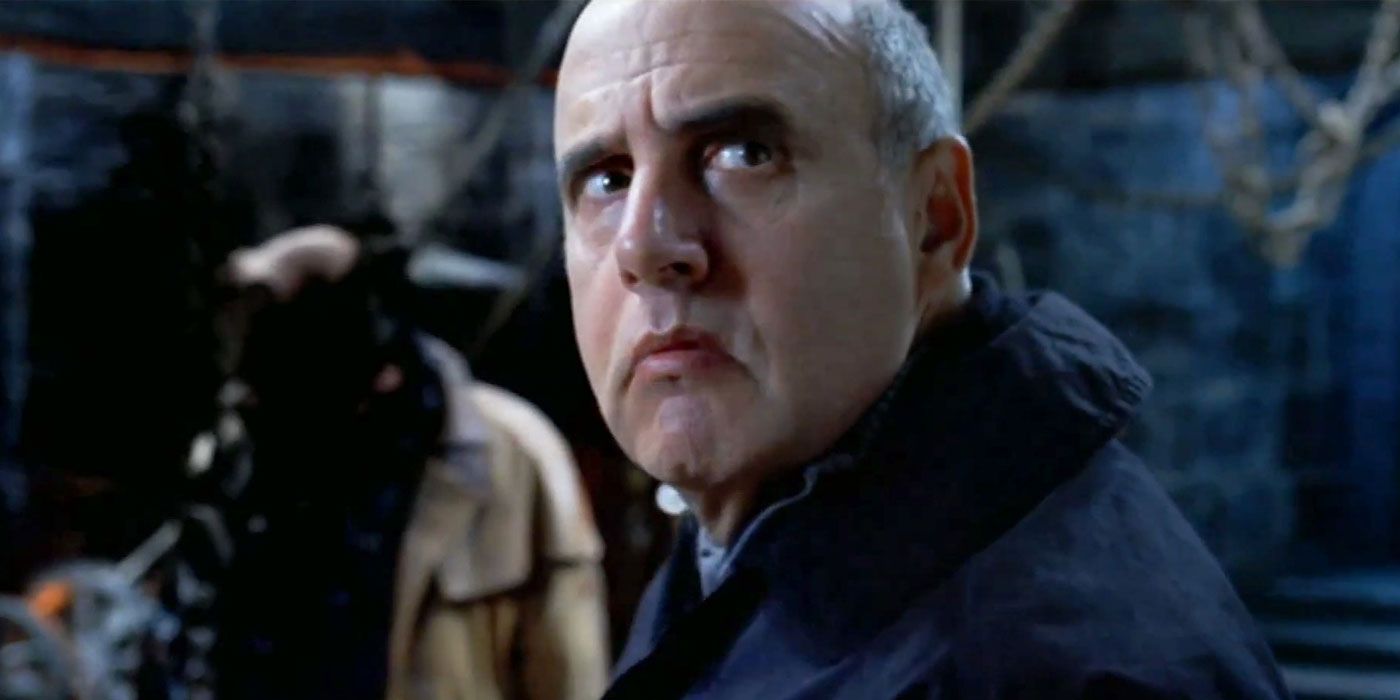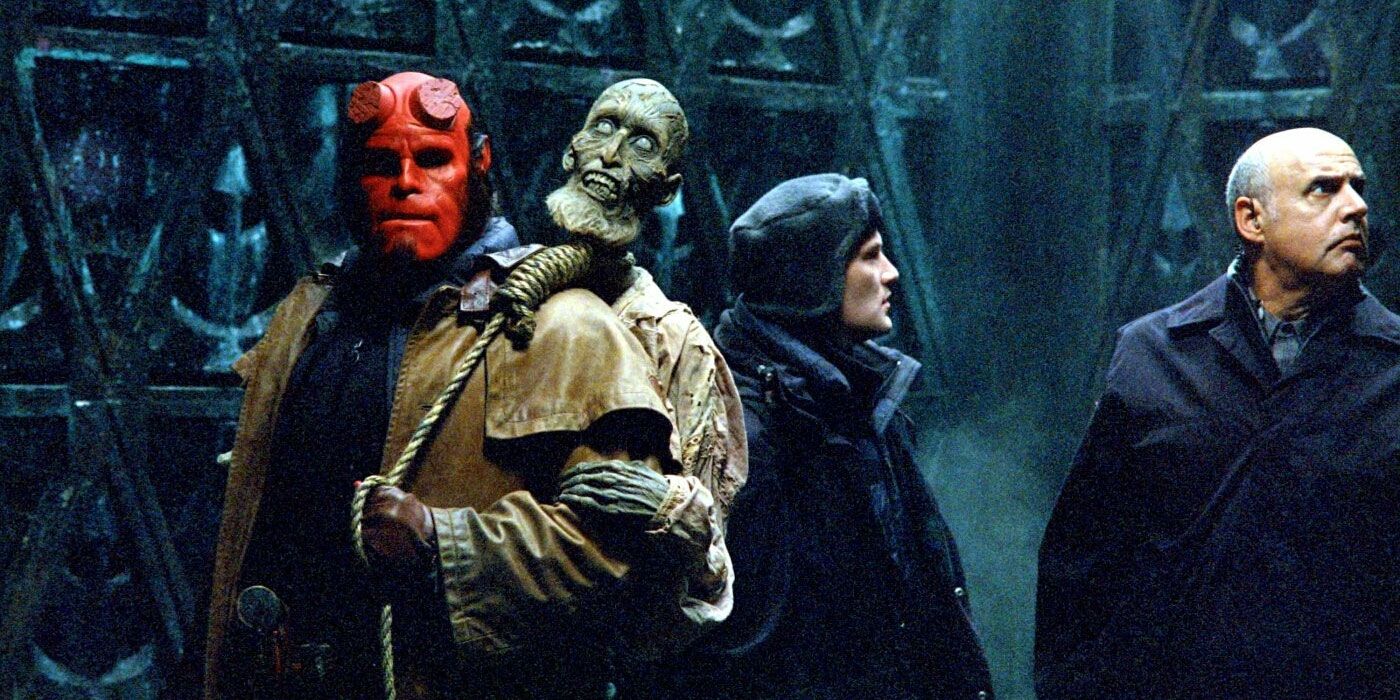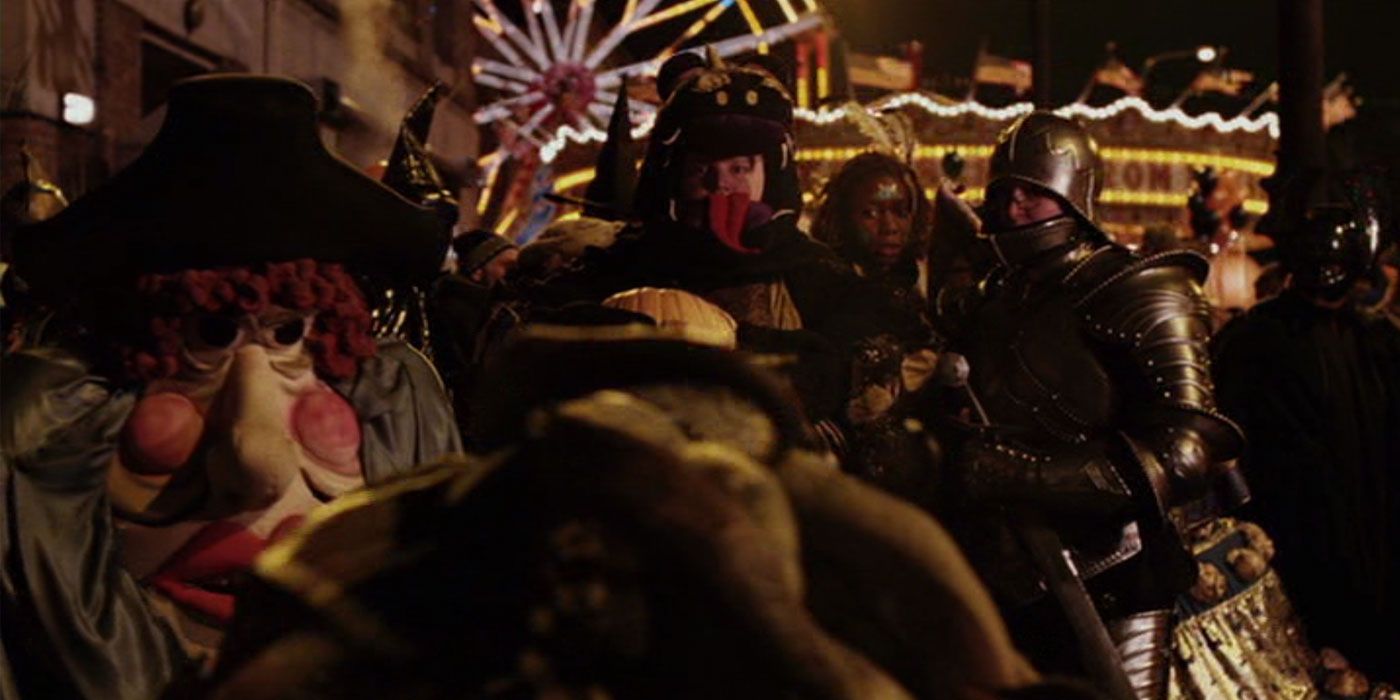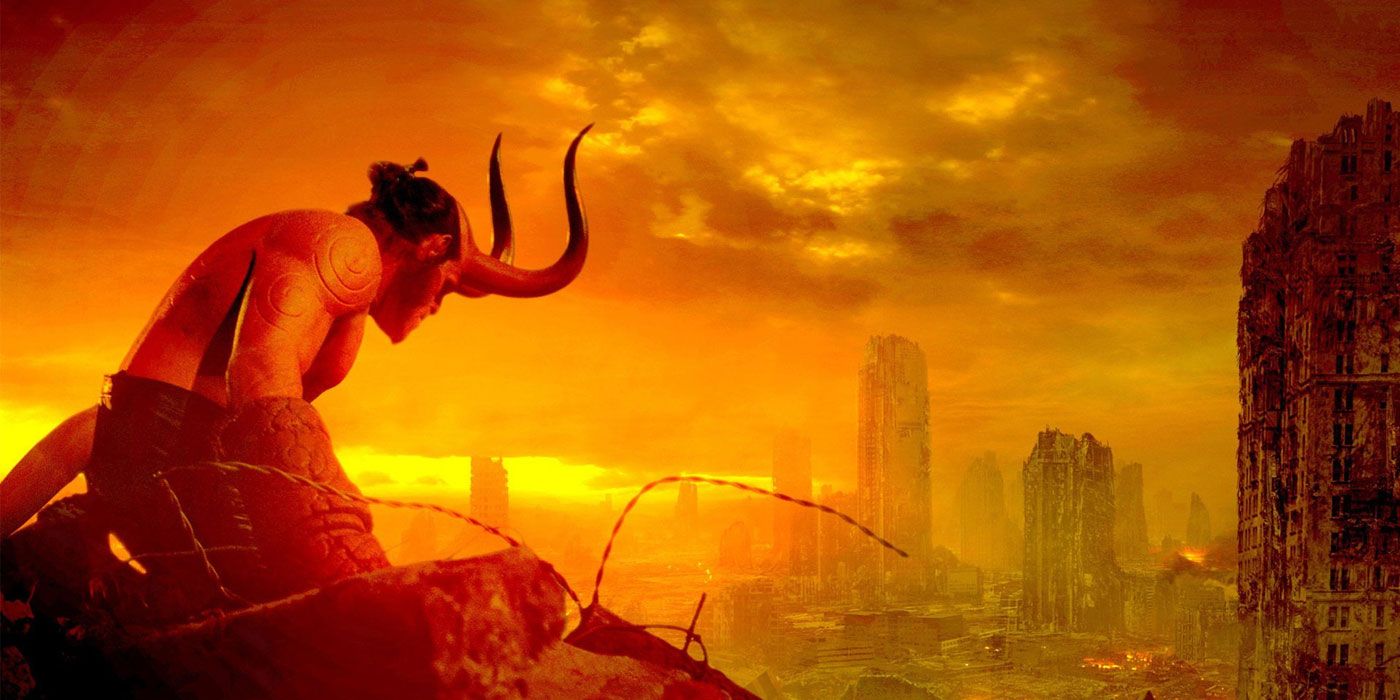For such an oddball character, Hellboy’s transition to the big screen was surprisingly lucid, thanks in no small part by the simpatico relationship between del Toro, creator Mike Mignola and the source material. That angry red lump on screen, born of hellfire, was as close as you could get to the character that’s been starring in Dark Horse Comics since the early ‘90s.
RELATED: Pan's Labyrinth: 15 Things You Never Knew
In lieu of a “Hellboy 3,” both the first film and its sequel, “The Golden Army,” hold up to multiple rewatches. The celebrated set and creature designs cram all sorts of weird and wonderful details into each frame that you only notice on your second or third time through and, being such a huge fan of the comics (having picked them up while filming his Hollywood breakout “Mimic” in 1997), del Toro also made sure to put in as many nods to eagle-eyed O.G. fans as possible. So much time, effort and care went into bringing Hellboy to the screen, that we’ve managed to uncover 15 things you might have missed in the middle of it all.
15 DAVID HYDE PIERCE ORIGINALLY VOICED ABE SAPIEN
With his “Blade II” star Ron Perlman locked into the lead role, it seemed a given that the secondary weirdo hero of Guillermo del Toro’s first “Hellboy” film would be played by Doug Jones. A strikingly slender gentleman whose balletic contortions have seen him play the zombie who loses his head in “Hocus Pocus” and a Morlock in “The Time Machine,” he has since had a particularly fruitful collaboration with del Toro, playing eerie creatures in “Mimic,” “Pan's Labyrinth” and “Crimson Peak."
What may not be obvious is the fact that, whilst Jones provided fishman Abe Sapien’s movement and dialogue in “Hellboy II: The Golden Army” (as well as voicing the character in spin-off video games and animations), his voice was dubbed over in the first “Hellboy” film. Instead, David Hyde Pierce, known best as the neurotic clean-freak brother in psychiatrist sitcom “Frasier,” provided Abe’s mannered, high-society accent. Pierce considered his contributions to be negligible compared to Jones’, and therefore refused on-screen crediting, did not attend the film’s premiere and was subsequently absent from the sequel.
14 SELMA BLAIR'S DOG INSPIRED A TROLL
The entrance to the troll market in “Hellboy II: The Golden Army” bears the motto, “Unus Mundus,” referring to psychologist Carl Jung’s “One World” theory which suggests an underlying collective unconscious from which everything originates. In the film, that refers to the literal secretive underworld from which all of the Earth’s myths and legends originate, a world where trolls and such are real, not fairy tales.
In reality, it refers to the fact that inspiration can come from anywhere, and you can’t always trace its origins. Except you totally can in the case of Wink, the troll played by Brian Steele in a suit so heavy he lost over 12 pounds purely from the sweat of exertion. Wink was named after and visually inspired by Selma Blair (who played Liz Sherman in both movies)'s pet dog. The pooch had the same name, was also missing an eye and was on the chunkier side.
13 SETH MACFARLANE WASN'T FIRST CHOICE FOR JOHANN
Before “Ted” or “A Million Ways To Die In The West,” Seth MacFarlane’s first big screen role was actually in “Hellboy II: The Golden Army.” The creator and star of “Family Guy” and “American Dad” provided the broad German accent of Johann Krauss (apparently inspired by Jeremy Irons in “Die Hard With A Vengeance”), the new leader of the B.P.R.D. field team who once was a psychic medium and is now a mist of ectoplasm who has to be contained within a diving suit. On screen, Krauss was played by John Alexander and James Dodd, with puppeteers operating his fishbowl helmet.
MacFarlane then came on to dub Johann’s voice in post-production, but he was a relatively late addition to the film’s cast. In fact, all of Krauss’s lines had already been recorded once, by actual German Thomas Kretschmann. Kretschmann, who was already a celebrated German actor in the likes of “The Pianist” and “Downfall” before getting his comic book due as Baron von Strucker in the Marvel Cinematic Universe, was apparently possessed of a voice which didn’t “mesh well” with the mechanical noises of Johann’s suit, and was thus recast.
12 HELLBOY QUOTES DEL TORO HIMSELF
For the most part, the “Hellboy” movie scripts align closely with the character from the comics. They’re somewhat loose in adapting the particulars of the source material, however; the first film is sort of based on the “Seed of Destruction” story arc which introduced the world to the B.P.R.D. “The Golden Army,” meanwhile, is an almost entirely original creation. Regardless, both managed to stay true to the heart of the character. Which is to say, a slightly grumpy blue-collar guy. A blue-collar guy who happens to be a hellspawn who fights demons, but nevertheless.
Mignola took inspiration from his own father, and del Toro appears to see a kindred spirit in the no-nonsense, charismatic and occasionally cocky Hellboy. In fact, he identifies so strongly, he wrote in a line that's delivered to Liz Sherman at the end of the first movie which came straight out of his own mouth in real life. His promise that “I’ll always look good” was originally said by del Toro himself, after his wife criticized the casual style of dress he had opted to wear for a formal event.
11 EVERY HUMAN B.P.R.D. HUMAN AGENT HAS AN "EARTHY" NAME
Agent Myers got a bit of a raw deal in the “Hellboy” movies. A human character created as an audience surrogate for the first film, he was a new recruit to the B.P.R.D. through whose eyes we were introduced to the stranger members of the Bureau. When actor Rupert Evans had scheduling conflicts between stage work and the sequel, his character was written out of the franchise entirely, his ignominious exit from the team meriting barely a mention during “The Golden Army.”
Even before then, Agent Myers was mainly a foil for stupid jokes. When he first meets Hellboy, he’s asked how he got a gig pushing “pam-cakes” (itself a nod to a classic two-page comic story), and his surname - like every other human B.P.R.D. agent we meet in the films - is a joke in itself. Lime, Moss, Clay in the first film and Marble, Flint and Steel in the second: they’re all named after things you would find when digging in the Earth, something which is a major plot point in both films, with a “mire” being another word for a swamp.
10 THE SET DESIGN IS FULL OF EASTER EGGS
Never one to let a good prop to go to waste, del Toro opted to populate the B.P.R.D.’s hall of antiquities with nods to his previous films, including an encore for the creepy jar babies from “The Devil’s Backbone.” Mike Mignola’s art, meanwhile, is so evocative that it was hard not to try and get in some of his designs into the film’s set decoration, including an original illustration for the gag in-universe “Hellboy” comic seen in the first film.
Perhaps most enticing of all for fans of the “Hellboy” comics is a fleeting appearance by Roger the Homunculus, a major member of the B.P.R.D. team in the source material. Complete with large ring around his groin, Roger appears as a hulking gray statue on a plinth in a hallway. This is seen when John Hurt’s Professor Broom is showing new recruit Agent Myers around the B.P.R.D. headquarters in the first film. In the same scene, the “Iron Shoes” from the short comic story of the same name can also be glimpsed in a display case.
9 THEY FOUND CREATIVE WAYS TO NOT SHOW BLOOD
Moments of gore are never particularly gratuitous in the “Hellboy” comics, but by the same token, they don’t shy away from showing the consequences of shooting big, gooey monsters with an over-sized hand cannon or pummelling them with a huge stone hand. With the demonic protagonist already putting them in a defensive position, when it came to the “Hellboy” film, the creative decision was made to feature as little blood as possible. The goal was that, by doing so, they would receive a PG-13 rating as opposed to the harder R which would decrease their audience further.
Del Toro, meanwhile, has also not shied away from the bloody, hard-to-watch consequences of violence either, so he had to come up with a workaround that was just as visually compelling as all that nastiness in “Cronos” and “Mimic.” For the subway fight scene with one of Rasputin’s slimy thralls in the first movie, Ron Perlman himself pitched the idea of using a gumball machine as a weapon, the sweet treats standing in for blood splatters; in the finished feature, it was a payphone and coins, plus a healthy dose of Sammael's saliva, which took the place of gore.
8 RON PERLMAN WAS DEL TORO AND MIGNOLA'S FIRST CHOICE
Revolution Studios were thinking big when they first got the ball rolling on a “Hellboy” film. Preceding the coming comic book movie boom, and perhaps working from the template of Sony’s “Spider-Man” success, they wanted big name stars to headline their somewhat more offbeat superhero story. Some of the Hollywood stars being bandied about during early discussions about who should play Hellboy himself included Vin Diesel, Dwayne Johnson and, of course, Nicolas Cage.
What would have likely been a very different, perhaps more manic version of “Hellboy” was avoided when Guillermo del Toro came aboard the project. A fan of the comics from way back, he worked closely with creator Mike Mignola to make sure his big screen version of Hellboy was authentic and respectful to the source material. As such, he discussed the lead actor with Mignola personally. They agreed to a meeting where both would say their first choice for the part in unison. To their surprise and relief, both of them said Ron Perlman.
7 THE STUDIO WANTED TO MAKE SOME WEIRD CHANGES
Attempting to graft the “nouveau shamanic” lunatic acting style of Nicolas Cage onto the more stoic, blue-collar character of Hellboy was just one of the more unusual changes Revolution Studios wanted to make to the character. Bear in mind they were taking a real risk with a character who, whilst his comic book origins made him a viable franchise star based on the recent success of Bryan Singer’s “X-Men” and Sam Raimi’s “Spider-Man” movies, was nonetheless a world away from those spandex-clad, mostly-human-looking heroes.
That lead to studio notes hoping to nudge “Hellboy” in the direction of more recognizable, provably popular superhero tropes. One idea was to make him more like the Hulk, a regular guy most of the time but transformed into a huge, devilish monster whenever somebody made him angry. They also pitched the concept of the character retaining his underworld origins, but looking like a regular human. Thankfully for all of us, Del Toro vetoed both ideas as a deal-breaker for him coming onto the project.
6 HELLBOY VERY NEARLY HAD A LEFT HAND OF DOOM
The Right Hand of Doom is one of the core, unshakable icons of the “Hellboy” mythology. Both a Biblical reference and an excuse to put a cover of that one Nick Cave and the Bad Seeds song on the first film’s soundtrack, that huge stone first Hellboy wields is important in-universe (as an impossible-to-escape sign of his destructive destiny) and metatextually (it provided the title for a short story collection of the same name). And yet, all of that very nearly changed.
When the idea of a “Hellboy” movie first began to pick up steam, one of the major mooted changes from the source material was to swap sides and make it the Left Hand of Doom. After all, it’s somewhat impractical to expect an actor to perform whilst retaining zero use of their dominant hand. All the early costume design and concept art for the “Hellboy” film depict the character with the Red Left hand, until the casting of Ron Perlman proved particularly fortuitous: not only did he have the requisite frame and gravelly voice, he was also a southpaw!
5 ALL THE MONSTERS' DESIGNS ARE ASYMMETRICAL
Guillermo del Toro’s films feature some of the best creature designs this side of Stan Winston, with many of the memorable monsters from his films - The Pale Man from “Pan’s Labyrinth,” the kaiju in “Pacific Rim” - come straight from the director’s own notebooks. It may have escaped your attention while you were enraptured by the brilliantly gross and horrifying looks of these creatures, but there is one weird trick behind each of their designs which makes them so compelling.
Almost all of them are asymmetrical. With “Hellboy,” this design sensibility begins with the titular demonic hero, with a regular-sized left hand compared to the huge stone fist on his right. From there, del Toro asked visual designer Ty Ellingson to add an asymmetrical lens to Abe Sapien’s goggles, and to have the Sammael monsters mirror Hellboy by having one arm larger than the other and more eyes on one side of their head. In “The Golden Army,” the Angel of Death had that crack in its circular head and Wink has his missing eye.
4 JEFFREY TAMBOR WAS A LAST-MINUTE REPLACEMENT
Immediately, audiences knew that “Hellboy” was something a little different from their usual superhero movie fare. Well, that’s if they weren’t already tipped off by the fact that it’s called “Hellboy.” The film opens with footage of B.P.R.D. Director Manning being interviewed on television, refuting reports of a demon-like agent working for a shadowy government organization. The actor playing Manning? Why, that’s Jeffrey Tambor, the deadpan comedic actor then known for his roles in cult series “The Larry Sanders Show” and “Arrested Development,” years before he was winning awards for his more dramatic turn in Amazon’s “Transparent.”
Tambor’s casting was a stroke of genius, bringing along a cultural cache for hip audiences and staking the more outlandish territory “Hellboy” would be occupying. It also happened almost entirely by accident. Originally, another (unnamed) actor was cast in the role of Manning. When he didn’t turn up for his first day on set, the production quickly scrambled to recast the role. What was undoubtedly a stressful situation at the time turned out to be a blessing in disguise.
3 DEL TORO'S VOICE IS ALL OVER BOTH FILMS
It’s not enough for Guillermo del Toro to write the scripts, provide concept art and direct his movies, apparently. Just try and keep the irresistibly charming and effervescent horror renaissance man from getting his voice into the mix, too. Hands on during all stages of production, del Toro is also known for mucking in when it comes to A.D.R. (or automated dialogue replacement): the process of dubbing in dialogue once filming on a project has wrapped.
In both “Hellboy” films, del Toro’s sonorous Mexican tones have been used to fill in foley for monster growls and noises, sound effects, and even full characters: he was the man behind the exasperated protestations of Ivan, the Russian corpse Hellboy exhumes to help his team find Rasputin’s base in the first film; he provided most of the chatter for the troll market in “The Golden Army;” the voice of young Hellboy in both films; the death rattle of Kroenen; and the Lovecraftian squeals off Sammael. He’s certainly got range, that man.
2 DEL TORO AND MIGNOLA HAVE CAMEOS
Besides getting his voice and lines from his actual life into the first “Hellboy” film, del Toro also manages a brief visual appearance, too. He appears while dressed as a dragon during the Halloween scene, when Hellboy manages to scrap with Sammael without standing out from the crowds of people who look similarly scary. Mignola also appears during Del Toro’s blink-and-you’ll-miss-him trick-or-treat scene, dressed as a knight, along with a couple more substantial “cameos” you’ll only get if you’re quick on the pause button and fluent in Russian.
For one, the apartment complex glimpsed during one of Liz Sherman’s tragic childhood flashbacks is named the “Mignola Complex.” For another, the tombstone to the right of the cemetery gates Hellboy enters on his way to disinter Ivan, again in the first film, was digitally altered from its actual Czech name to instead read “Here Lies Mike Mignola,” with the epitaph (in Russian) reading “Born in fire, died in fire,” a tongue-in-cheek nod to the origins of his character.
1 THE FIRST FILMS CAUSED CONTROVERSY THANKS TO THE PASSION OF THE CHRIST
The potential for blasphemy is right there in the title, but Mike Mignola has always expressed incredulity at the capacity for his most celebrated creation to cause controversy. After all, who could get upset by a name as self-consciously goofy as “Hellboy”? It’s never reached a “Harry Potter” book burning fever pitch, but nonetheless the big red grump has ruffled a few of the more conservative religious feathers since his inception. When he broke into the mainstream with the first “Hellboy” movie, this outrage reached a higher echelon, thanks in no small part to the timing of the film’s release.
Somehow, the first “Hellboy” movie hit cinemas the same weekend as Mel Gibson’s “The Passion of the Christ.” A surprise smash-hit, Gibson’s bloody and brutal depiction of the crucifixion managed to find a huge audience of Christians who were otherwise turned off by torture porn-levels of suffering. They found it in themselves to get mad about “Hellboy,” however, with some theaters in the South already balking at putting the word “hell” on their marquees, especially on Easter Weekend. Gibson’s film wound up beating “Hellboy” at the box office, helped in turn by those theaters who elected not to show the comic book movie, and by the people who really, really loved “The Passion of the Christ.”
Did we miss anything? Are you looking forward to a potential third film in the "Hellboy" movie franchise? Let us know in the comments!

